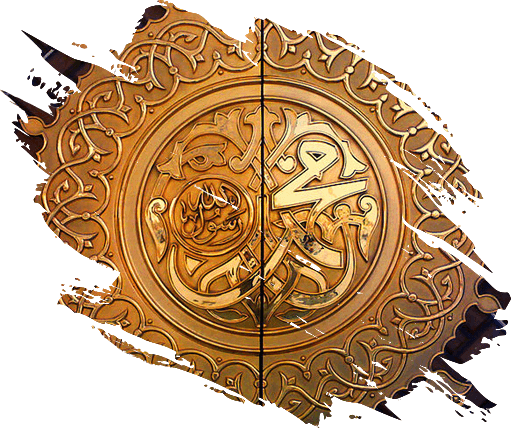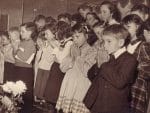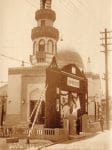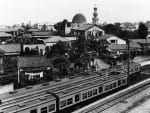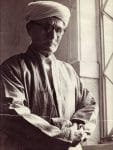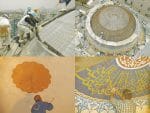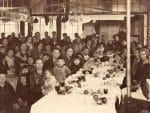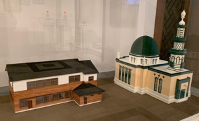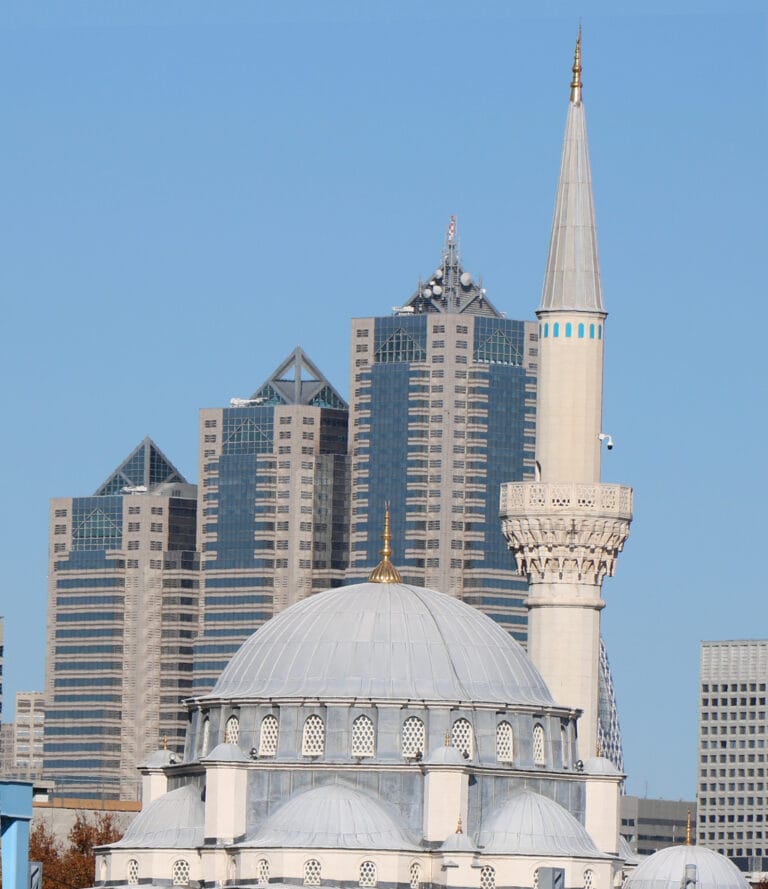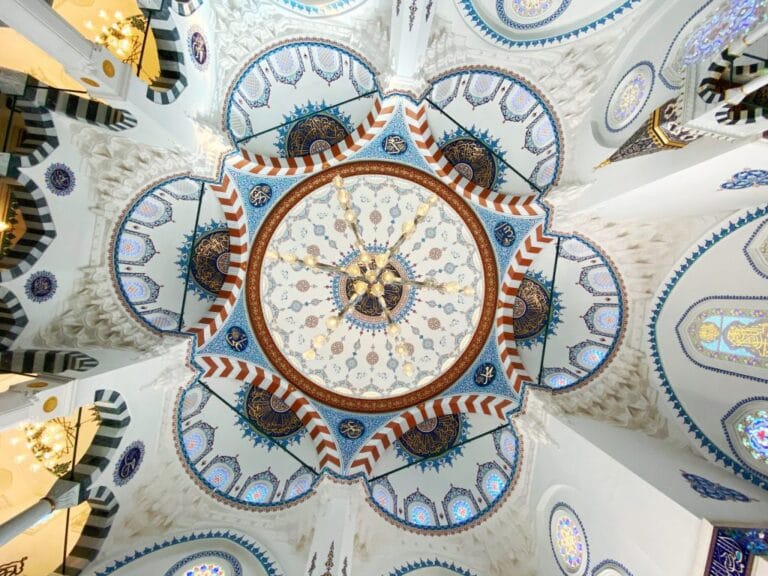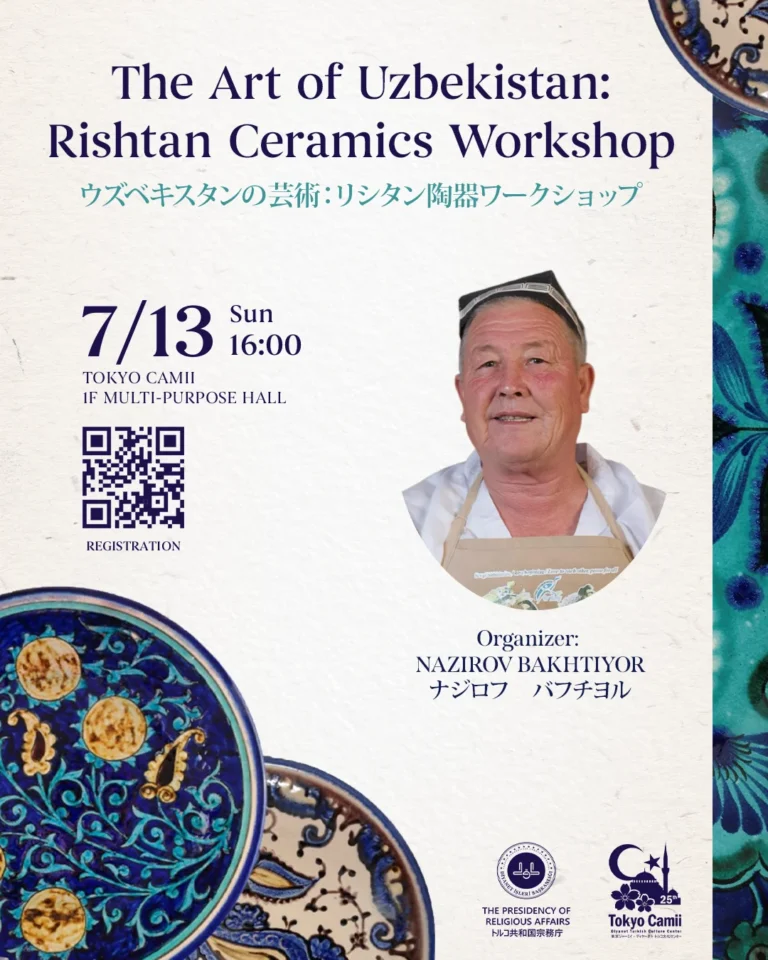About Tokyo Camii
The History of the Tokyo Camii
The history of Tokyo Camii dates back to pre-war days. In 1938, the Tokyo Islamic School was completed with the cooperation of the Government of Japan at that time. It was the fruit of the call for seeking the place of worship of Kazan Turks who escaped the Russian Revolution and migrated to Japan.
This mosque had since been a cornerstone for all Muslims in Japan for more than half a century, but it was demolished in 1986 due to the deterioration of its building. Then in 2000, it was reconstructed as Tokyo Camii & Turkish Culture Center.
When the social revolution occurred in Russia in 1997, many Muslims who were living in the country were persecuted and were forced to evacuate for life. Turks from Kazan province moved to Manchuria, through Central Asia and then emigrated to South Korea and Japan in search of a safe place to live.
The Turks who settled in Tokyo and Kobe could easily adapt to living in Japan where the climate is moderate. Immediately after the Great Kanto Earthquake in 1922, despite the US government exceptionally prepared a ship in Yokohama Port to rescue foreigners living in Tokyo, the Turks declined the offer and remained in Japan. In the same year, they founded Mahalle Islamiye Association with representatives of Abdulhay Kurban Ali, deepening friendship with the Japanese government with Abdurrashid Ibrahim who would come to Japan later on. The worries of the Turks who started a new life in Tokyo were about children’s education. In 1928, after obtaining the permission of the Japanese government, they established a school named Mekteb Islamiye.
Further, with the cooperation of the Japanese government, they purchased a land in Shibuya, Tokyo and relocated the school there in 1935. Finally, in 1938, they built a cami (mosque) adjacent to it and fulfilled their long-cherished wish.
Tokyo Camii, which served as a cornerstone for Muslims in Japan for more than half a century, was demolished in 1986 due to the deterioration of its structure. The site was donated by Tokyo Turk Association, newly founded after Mahalle Islamiye Association, to the Republic of Turkey under the terms of rebuilding the mosque. In 1997, the “Tokyo Camii Foundation” was established under the Presidency of Religious Affairs of the Turkish Republic, and contributions were received from all over Turkey. The design of the new place of worship belongs to Muharrem Hilmi Şenalp, the representative architect of modern Turkish religious architecture. Approximately 100 engineers and craftsmen came to Japan from Turkey for construction and engaged in the building body and interior construction work. The construction work of Tokyo Camii, which began on June 30, 1998, was completed in about two years owing to the efforts of people concerned from both Japan and Turkey. The opening ceremony was held grandly on June 30, 2000, and Tokyo Camii opened a new page of history as a place of worship and a place of dialogue among civilization where people interact.
The Features of Tokyo Camii
Tokyo Camii completes the architectural silhouette of the region in which it is located, with the Shinjuku skyscrapers behind it. In addition to being the largest Muslim mosque in Japan, it plays an important role in meeting the mosque needs of Muslims who live in Tokyo or are in this country on various occasions.
Tokyo Camii and Diyanet Turkish Culture Center was built in the classical Ottoman-Turkish architectural style, which constitutes the peak of religious architecture in the Islamic civilization. Having central plan structure with six half-domes in our classical architecture, it has a feature that extends from past to the future by integrating tradition and technology. In the Tokyo Camii, there are examples from almost every branch of Turkish-Islamic arts, each of which is an independent work of art.
Tokyo Camii was built on a land of 734 m² with a total construction area of 1693 m². It also has steel-reinforced concrete system on an earthquake-resistant pile foundation. The domes were cast without using any moulds. All stone and marble elements were placed with steel mounting equipment, and no mortar was used. The acoustics of the mosque is provided by the spaces inside the dome that have been used for thousands of years.
In the interior and exterior decoration of Tokyo Camii and Diyanet Turkish Culture Center, an attempt was made to achieve a general harmony between various works selected from Turkish-Islamic arts such as calligraphy. Especially the mosque part (second floor) was decorated with the most beautiful examples of these arts, creating an atmosphere that fascinates the visitors. For the decoration, not only artistic features were taken into consideration, but also verses and hadiths containing important religious messages were selected. For example, the narration between the Prophet Muhammad (saw.) and Gabriel (a.s), which became famous as the “the Hadith of Gabriel”, was written in the calligraphy placed above the windows. The narration briefly conveys the description of Islam, faith and goodness (Ikhlas).
The ground floor entrance is arranged as “Turkish-Islamic Handicrafts Exhibition”. Additionally, a “chief room” with all its elements is included as an example of Turkish civil architecture. There is a multi-purpose hall next to the ground floor entrance. 630 people can worship in the main area of the mosque, including the mahfil part, and 2000 people can worship at the same time when other sections are opened for worship if necessary.
There exists a book sales section on the ground floor of the mosque building. This stand contains works in many languages, especially Turkish, Japanese, English and Arabic. The book sales section, which contains publications for all ages, including children, teenagers and adults, enables visitors to obtain information on religious and cultural issues.
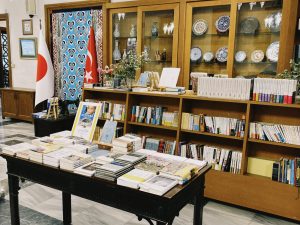
One corner of the multi-purpose hall on this floor is designed as a small library. The library, which contains works in many languages such as Turkish, Japanese and other languages, is arranged in a way that visitors can easily access and read. Those who come to the mosque can read books in this section, accompanied by the complimentary tea and dates.
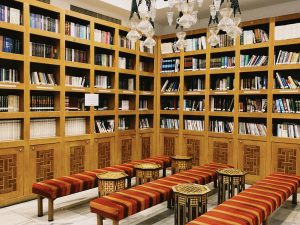
On this floor, there is also an exact scale model of the old mosque and school building. The model, prepared by professors and students of the architecture department in Japan, allows visitors to visualize historical buildings.
Turkish Islamic Arts in the Tokyo Camii
Tokyo Camii and Diyanet Turkish Culture Center were built based on Ottoman architecture and there are examples of many branches of art in every corner of the mosque. Turkish-Islamic arts, which are the expression of the Turkish-Islamic civilization’s understanding of thought and beauty contain many symbolic expressions about the bond that human establishes with Allah. The basis of this understanding is the message that every being is actually a manifestation of Allah. All beings are temporary, but Allah Almighty is eternal and everlasting. An artist is not the person who creates a work of art, but the person who discovers the magnificent harmony that Allah has established in this world and reflects these in his works. It is possible to find traces of the journey from the worldly to the divine in all types of Turkish-Islamic arts. Each work of art is nothing but an expression of divine love.
HÜSN-İ HAT (CALLIGRAPHY): Hüsn-i Hat (calligraphy), which is the art of beautiful writing, was born from the effort to write the Holy Quran in the most beautiful way as an expression of the respect shown to it. Hat artists are called “hattat”. The art of hat has survived and diversified until today, thanks to the efforts of hattats with a dedicated spirit. It is possible to see the best examples of hat, which has many kinds such as Thuluth, Naskh, Taliq, in the interior and exterior decorations of the Tokyo Camii.
KALEMİŞİ/KALEMKARİ: In Ottoman mosque architecture, there are branches of art specially developed for the interior decorations of the building after its construction is completed. Kalemişi or kalemkari is the art of decorating the dome, arch and walls of the mosque. Like other Turkish-Islamic arts, portraits are not included in the decorations of Kalemkari art, on the contrary geometric patterns and flower figures stand out. The artist of Kalemkari is called “Kalemkar”. For centuries masters of kalemkar have engraved the art of kalemişi on surfaces such as gypsum plaster, wood, leather and stone.
ÇİNİ (TILE): The art of çini (tile), which has a deep-rooted history in Turkish-Islamic arts, is based on the crafting of ceramic pieces. A thin primer is applied to the ceramic pieces obtained from clay soil and decorated with various colours and motifs by the artisans. Then these pieces are fired in the oven and the crafted surface is glazed. The art of tile can be applied to large plaques as a single piece, or it can be applied to small pieces by crafting them one by one and then combining them. Wall tiles generally consist of a combination of square or hexagonal pieces. On products such as plates and bowls, tile art is performed as a single piece.
KÜNDEKARİ: The art of kundekari which is an ancient tradition, is the art of creating a large work by interlocking small wooden pieces cut in geometric shapes. No screws or glue are used to attach the parts. In this way, the work of art does not rust or deteriorate even after centuries. Bending due to moisture and heat change are also prevented. Oak, walnut, ebony, boxwood and rose trees are mostly preferred in the production of kundekari because they are durable and easy to process.
SEDEFKARİ: Mother of pearl (sedef) is a glary organic stone found in the shells of sea creatures such as mussels, oysters and snails. It is called the “mother of pearl” because it comes from the same family as pearl. Sedefkari is the art of carving the wood finely and then placing a mother-of-pearl stone inside and crafting it at the same level as the wood. In Tokyo Camii, the art of Kundekari and Sedefkari are used together.
REVZEN: Windows have a special place among the decorative arts used in Ottoman mosques. Revzen is the art of creating a pattern by placing colored glass pieces between plasters on mosque windows. The inner and outer sides of the window are designed separately and specifically. Windows and glasses are chosen as large or small, transparent or colored, depending on the reflection of light.
STONE AND MARBLE CRAFTMANSHIP: Stone and marble, the main building materials of the mosque, become an art in Ottoman architecture. Stones and marbles are crafted by artisans using various carving techniques and achieve an aesthetic appearance. It is possible to see this art in the main elements such as the mihrab and minbar in Tokyo Mosque, as well as in the bird houses (bird palace) on the outer walls of the mosque. Birdhouses, which show that Islam is based on love and mercy for all living beings, appear as an elegant detail of Ottoman architecture and Turkish-Islamic arts.
EBRU (TURKISH ART OF MARBLING): Ebru means cloud. Ebru, one of the arts with the most deep-rooted history of Turkish-Islamic arts, takes its name from the fact that the paints on the water form cloud-like shapes. The first step in the art of marbling is drawing various shapes and patterns with paints on the condensed water in a tray. After the pattern is completed with different layers, a special paper is laid on the water. Thus, the paints on the water transfer to the paper and a beautiful picture is created. Marbling works can be used as book pages or paintings.
TEZHİP (THE ART OF ILLUMINATION): Tezhip means decoration with gold. The art of Tezhip is an art that involves decorating the page edges of a written text with very fine and elegant patterns and painting them with gold as well as other colors. Since Tezhip was only applied to very important documents, it is possible to see the best examples of this art on the pages of the Holy Quran throughout the history. The art of Tezhip is meticulously applied, especially on the pages containing Surah al-Fatiha and the first five verses of Surah al-Baqarah. It is also possible to see the most beautiful examples of Tezhip on the edges of the calligraphy paintings.
HİLYE-İ ŞERİF (THE HILYA SHARIF): Hilya is a special art in which many of Turkish-Islamic arts are used together. Works of art depicting the physical characteristics and beauty of the Prophet Muhammad (saw.) are generally called the hilya sharif. Since there are no human portraits in Turkish-Islamic arts, the silhouette of the Prophet Muhammad is not seen in any artworks, either. As a matter of fact, the Prophet Muhammad (saw.) has a perfect personality far beyond his external appearance and a beauty that transcends this world. For this reason, some hilya works include the picture of the Prophet’s holy tomb in Madina to point out him. Hilya works are artistic expressions of the love and respect shown to the Prophet Muhammad(saw.), equipped with elegant lines.
| Prayer | Time |
|---|---|
| Fajr | 03:04 |
| Sunrise | 04:45 |
| Dhuhr | 11:48 |
| Asr | 16:45 |
| Maghrib | 18:50 |
| Isha | 20:24 |
